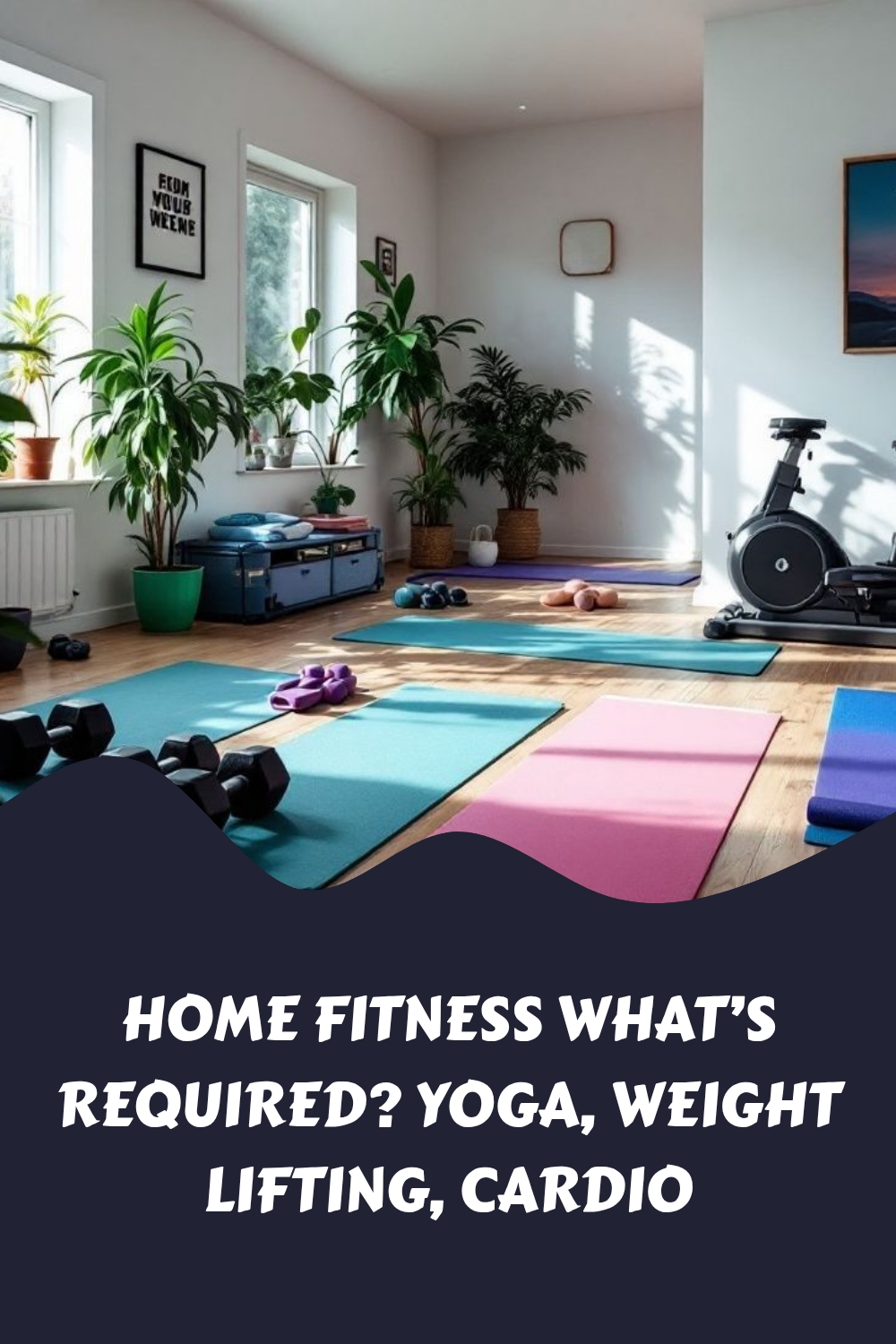Home fitness or home to stay fit at home is a puzzle many of us are trying to solve. With busy schedules and gyms far away, it’s tough to find the right mix of exercises that keep us healthy and strong.
Fitness is all about strength training, stretching out those muscles, and getting our hearts pumping. But how do we start? And what stuff do we need?
Here’s a fact: A balanced workout with yoga, weight lifting, and cardio can boost our health in amazing ways. This article will show you how to mix these elements for a top-notch home fitness routine.
You’ll learn about the best gear — like dumbbells for muscle workouts and mats for yoga poses — plus tips on setting up your space safely. Ready for action? Let’s go!
Key Takeaways
- A mix of cardio, weight lifting, and yoga improves overall fitness by boosting heart health, muscle strength, and flexibility.
- Essential gear for home workouts includes treadmills or biking equipment for cardio, dumbbells and resistance bands for strength training, and yoga mats and blocks for stretching exercises.
- Space safety is crucial. Ensure enough room for activities to avoid injuries. Also check that floors can support the weight of gym equipment.
- Setting realistic fitness goals keeps you motivated. Change your workout routine often to challenge different muscles and prevent boredom.
- Variety in workouts prevents overuse injuries. Including different types of exercises like running, lifting weights, and doing yoga poses ensures a well-rounded approach to fitness.
Essential Components of Home Fitness

Home Fitness: What’s Required?
Getting fit at home means you need the right gear. Think of your space as a mini gym—equipped for cardio, muscle building, and stretching.
Yoga, Weight Lifting, Cardio
Building a functional home fitness setup can be tailored to your space, preferences, and goals. Here’s a practical, organized overview to help you get started with yoga, weight lifting, and cardio at home.
Essential Home Fitness Equipment by Fitness Type
Yoga
Space: Allocate at least 21sqft (approx. 4.5×4.5ft); enough room for a standard yoga mat and safe movement.
Yoga Mat: Fundamental for safety, comfort, and grip.
Optional Props:
Yoga blocks (or stacked books)
Yoga strap (or a belt/scarf)
Bolster/cushion or rolled towels
Blanket for support or comfort
Atmosphere: Quiet, uncluttered and, if possible, with natural light. Consider making it an inviting spot by adding plants or calming décor.
Weight Lifting
Home fitness Bare Minimum:
Dumbbells (adjustable sets save space and cost)
Resistance bands (versatile, space-saving; can substitute or complement dumbbells)
Intermediate Options:
Adjustable weight bench
Barbell with weight plates (if space and budget allow)
Kettlebell(s)
Advanced Setup:
Power rack or squat rack
Bench (flat or adjustable)
Selectorized dumbbells/bands
Extras: Medicine balls, pull-up bar, TRX or rings for bodyweight work.
Cardio
Home fitness No-Equipment Options:
Jumping jacks
High knees
Mountain climbers
Burpees
Dancing to music
Marching or jogging in place
Equipment-Based Cardio:
Jump rope: Compact and highly effective
Treadmill, stationary bike, or rowing machine: For those with space and budget
Elliptical: Lower-impact alternative
Tip: Many cardio routines don’t require machines—bodyweight plyometrics and HIIT circuits are space- and budget-friendly
Home Fitness Essentials Checklist
| Equipment Category | Basic Home Kit | Enhanced Options |
|---|---|---|
| Yoga | Mat, clear floor space | Blocks, straps, bolster, décor |
| Weight Lifting | Dumbbells, resistance bands | Bench, barbell, kettlebell, rack |
| Cardio | Bodyweight moves, jump rope | Treadmill, bike, elliptical |
Creating Your Home Fitness Space
-
Organization: Keep equipment tidy—storage bins or baskets help maintain a clutter-free zone.
-
Motivation: Personalize the space with elements that inspire you—calming for yoga, energizing for weights/cardio.
-
Safety: Ensure good lighting, non-slip surfaces, and enough space to move freely.
Starting a home fitness routine does not require a major investment. With just a little space, a mat, some resistance gear, and creativity, you can achieve a comprehensive yoga, strength, and cardio practice at home. As your routine grows, you can expand your equipment and tailor your setup to your needs and ambitions
Cardiovascular Equipment for Home Fitness
Cardio equipment is key for a workout for home fitness. It helps your heart rate go up and keeps you fit. Examples include treadmills, indoor cycling bikes, ellipticals, rowers, climbers, and punching bags.
Each piece of equipment has its own way to make you work hard and sweat. For instance, a treadmill is great for running or walking any time you want, no matter the weather outside.
Using these machines can lead to better health. They help stop heart disease by keeping your cardiorespiratory system strong. Mixing different types of cardio workouts can stop boredom and makes sure all parts of your body get a good workout.
This mix might include biking on one day, using the rower another day, and boxing with a punching bag on yet another day.
Choosing the right machine depends on what you enjoy doing and what fits in your home fitness space. Some people might pick an indoor bike because they love biking but can’t always go outside to ride.
Others might choose a climber for intense workouts in shorter times. Whatever choice you make should match your fitness goals and keep you excited about exercising every day.
Effective, Efficient Cardio Exercises for Home Fitness
Targeted cardio at home requires minimal space and can be highly effective for fitness, heart health, and calorie burn. Below is a curated list of top exercises and strategies proven to deliver results quickly and efficiently, even without equipment.
Top No-Equipment Cardio Exercises
Jumping Jacks
A classic, full-body move to raise your heart rate quickly, requiring only open floor space.
High Knees
Drive your knees rapidly toward your chest while jogging or running in place—excellent for elevating your heart rate and engaging your core.
Mountain Climbers
Start in a plank position and rapidly alternate driving each knee toward your chest, working your whole body.
Burpees
These combine a squat, jump, and push-up for a high-intensity, calorie-burning workout in one continuous movement.
Squat Jumps
Start in a squat, then explode up into a jump. This plyometric exercise boosts cardiovascular strength and power.
Jump Rope (if you have one)
Jumping rope is a time-efficient form of cardio, burning significant calories and improving coordination.
Speed Skaters
Leap laterally from one foot to the other, mimicking ice skater movement to increase heart rate and train agility.
Lunge Jumps
Perform a jumping switch between lunges. Intensifies leg training while delivering a cardio boost.
Toe Taps
Stand in front of a step or sturdy object and rapidly tap alternating toes on its surface, keeping your pace brisk.
Dancing
Put on music and move continuously—great for cardio, mental health, and flexibility.
Structuring an Efficient Cardio Session
High-Intensity Interval Training (HIIT)
One of the most efficient ways to optimize home cardio is with HIIT. Example format:
Select 5–8 exercises (from the list above).
Perform each for 30–60 seconds, back-to-back.
Rest for 30–60 seconds after one circuit.
Repeat for 2–3 total rounds.
HIIT maximizes calorie burn, heart health, and time efficiency.
Steady-State Cardio
For a gentler option, pick 2–3 moves and maintain a moderate intensity pace for 15–30 minutes (e.g., continuous step touches, marching, or dancing).
Tips for Success
Warm up with dynamic stretching or light movement (2–3min).
Cool down with easy movements and light stretching to support recovery.
Modify intensity (e.g., by omitting jumps for joint-friendliness) to suit your fitness level.
Stay hydrated and aim for good ventilation in your workout area.
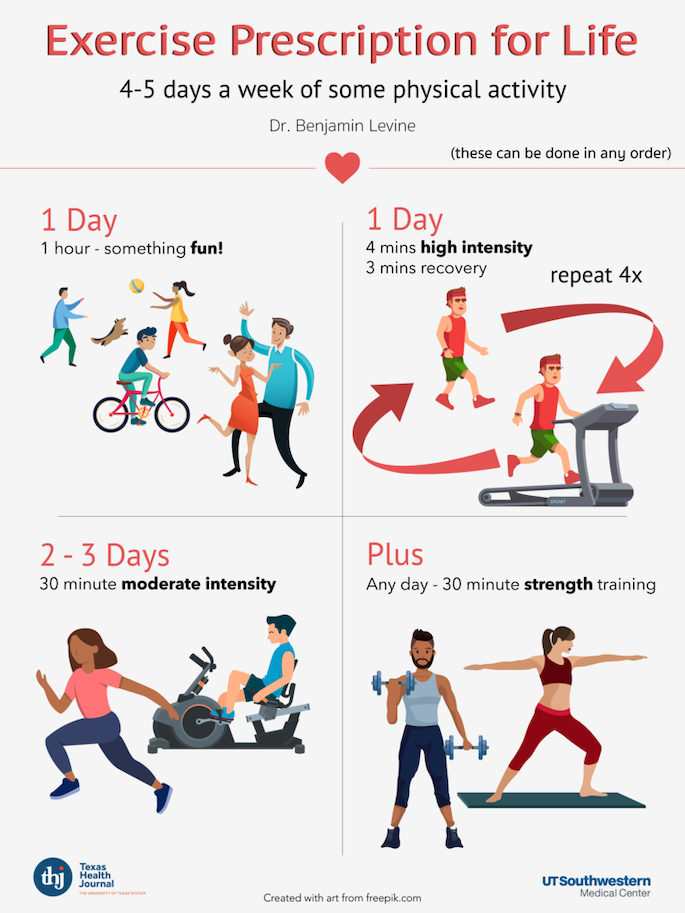
Best Home Fitness Cardio Exercises
| Exercise | Target Areas | Impact Level | Suitable For |
|---|---|---|---|
| Jumping Jacks | Full body | Low/Mod-High | Beginners/All Levels |
| Burpees | Full body | High | Interm./Advanced |
| High Knees | Core/Legs | Mod-High | All Levels |
| Mountain Climbers | Core/Legs/Upper | High | All Levels |
| Squat Jumps | Legs/Glutes | High | Interm./Advanced |
| Speed Skaters | Legs/Core | Mod-High | All Levels |
| Dancing | Full body | Mod-High | All Levels |
| Toe Taps | Legs/Cardio | Low/Mod | Beginners/All Levels |
Weight Training Equipment
The best weight training equipment for building strength and muscle strikes a balance between versatility, durability, and alignment with specific training goals. Here’s a rundown of the most effective and commonly recommended equipment for home fitness or small-gym setups:
Essential Strength Training Equipment:
Dumbbells
Highly versatile and effective for isolation and full-body exercises. Available in both fixed and adjustable types, with adjustable dumbbells offering space savings and a wide range of weight options.
Barbells and Weight Plates
Fundamental for compound lifts like squats, deadlifts, and bench presses. Olympic barbells paired with plates (standard or bumper) are ideal for increasing resistance progressively.
Adjustable Bench
Necessary for exercises such as bench presses, Bulgarian split squats, and seated curls. Adjustability increases the variety of exercises performed and helps target different muscle groups.
Power Rack or Squat Rack
Critical for safely performing heavy lifts (squats, overhead press) by providing adjustable bar levels and safety bars.
Kettlebells
Great for dynamic movements that challenge strength, endurance, and coordination—such as swings, snatches, and Turkish get-ups.
Resistance Bands
Portable and inexpensive, they add resistance to bodyweight exercises and are excellent for warm-ups, accessory movements, and rehab work.
Cable Machines: Allow for continuous tension and a different stimulus compared to free weights, suitable for isolating specific muscles.
Optional/Accessory Equipment:
Weight Benches
Both flat and adjustable varieties are available, with adjustable benches maximizing flexibility for different presses and flys.
Accessory Attachments
Items like dip bars, chin-up bars, and leg extension attachments expand the range of exercises.
Specialized Machines
Lat pulldown and leg press machines target specific muscle groups and are advantageous for controlled, isolated movements.
Space-Saving/Home Solutions
Bundled sets that combine adjustable dumbbells, benches, and even small racks are ideal for making the most of limited spaces while enabling a comprehensive workout.
Foldable, wall-mounted racks or power cages help maximize use of small home gyms.
Quality Considerations
Choose equipment that matches your lifting level: robust racks and commercial-quality benches for heavy lifters, or compact/adjustable gear for beginners or those short on space.
Reputable suppliers (e.g., Rogue Fitness, Bells of Steel, Montreal Weights) offer proven durability and customer support
Weight training gear is key for building muscle and strength. You might think of big machines, but it’s more than that. Free weights like dumbbells and barbells are perfect. They help with compound exercises which work multiple muscles at once.
This means more muscle growth in less time. Also, using kettlebells adds variety to your workout.
Resistance bands are another must-have. They’re great for warm-ups or adding difficulty to bodyweight exercises. Plus, they don’t take up much space in a home fitness.
For those lifting heavy, a bench is useful too. It supports exercises like bench presses and rows.
Lifting weights isn’t just about bulking up; it’s about keeping your body strong and healthy.
Choosing the right equipment depends on your goals and the space you have at home.
Specific Equipment Selection by Training Goal
| Goal | Recommended Equipment | Influence on Muscle Development |
|---|---|---|
| Overall Muscle Mass | Free weights + machines | Both enable hypertrophy; free weights recruit stabilizers |
| Targeting Weak Areas | Machines, cable systems | Allow precise targeting of lagging muscle groups |
| Functional Strength | Free weights, kettlebells | Engage multiple muscle groups, mimic real-life actions |
| Safe and Isolated Practice | Machines, bands | Best for beginners, rehab, or preventing injury |
| Sports-Specific Power | Barbells, functional tools | Compound, explosive movements for sport transfer |
The Principle of Specificity
The equipment you use should reflect the adaptations you wish to see. This is known as the principle of specificity—you become strongest in the exact movement or modality you train. For example:
-
Training with free weights improves strength in free-weight movements.
-
Machine training boosts strength in machine-based lifts.
-
Both lead to similar muscle growth if training effort is matched, but combining both modalities can maximize hypertrophy and performance variety.
Practical Tips
-
Mix Modalities: Incorporate both free weights and machines to access the full spectrum of muscle engagement, isolation, and safety.
-
Align Equipment With Goals: Select tools that best support your desired outcome—choose compound, free-weight moves for global strength, and isolation machines for focused muscle development.
-
Account for Experience Level: Beginners may benefit from guided support (machines, bands), while advanced lifters gain more from the versatility and challenge of free weights.
-
Progressive Overload: Regardless of equipment, ensure you’re systematically increasing resistance to continue making gains.
Selecting specific weight training equipment steers your path toward particular muscle development goals. Free weights foster overall mass, coordination, and real-world strength. Machines excel at targeted muscle development and safe, isolated practice. Blending both, and choosing purposefully based on your personal objectives, ensures comprehensive and effective muscle development
How Free Weights vs. Machines Target Different Muscle Fibers
Muscle Fiber Types: Quick Overview
-
Slow-Twitch (Type I): Endurance-oriented, activated during low-intensity, sustained activity.
-
Fast-Twitch (Type II): Larger, more powerful, and recruited during high-intensity or explosive efforts. Important for hypertrophy (muscle growth) and maximum strength.
Equipment Influence on Fiber Recruitment
Free Weights
-
Higher Stabilizer Engagement: Free weights (dumbbells, barbells) require your body to stabilize the load, recruiting numerous muscle groups—including core and smaller stabilizers—not just the prime movers.
-
Greater Muscle Activation: The need for balance and coordination results in wider muscle activation, often resulting in more muscle fibers firing during compound lifts like squats and bench presses.
-
Natural Range of Motion: Free weights allow more natural movement patterns, enhancing recruitment across a broader range of muscle fibers.
-
Fast-Twitch Emphasis in Heavy or Explosive Lifts: Using heavier weights or performing lifts explosively with free weights recruits fast-twitch fibers more effectively, thanks to the body’s need to generate maximal force quickly.
Machines
-
Targeted Isolation: Machines provide guided movement paths, limiting the role of stabilizers and allowing you to isolate specific muscle groups. This can help maximize activation of a particular muscle’s fibers but often involves fewer supporting muscles.
-
Safer High-Intensity Training: Machines offer greater safety for lifting near failure or using very heavy loads, making it easier to push prime movers (the main target muscle) close to fatigue. This can fully recruit both slow- and fast-twitch fibers within the isolated muscle when training intensity is high enough.
-
Consistent Tension: Because the machine ensures strict form and steady resistance, you can focus all force output on the intended muscle—potentially allowing for more complete activation of fibers within that muscle group.
Scientific Insights
-
Effort Level Governs Fiber Recruitment: The “size principle” states that muscle fibers are recruited from smallest (Type I) to largest (Type II) as the demand for force increases. Both free weights and machines can activate all fiber types if sets are taken close to failure or performed explosively.
-
Free Weights = More Overall Muscle Involvement: Studies suggest free weights generally activate more total muscle (including stabilizers), which can translate into slightly higher overall muscle fiber recruitment, especially in compound lifts.
-
Machines = Greater Isolation, Similar Growth: EMG studies and meta-analyses reveal that, when volume and intensity are matched, both modalities result in similar muscle growth and hypertrophy—as long as the target muscle is pushed near its limits
Practical Table: Muscle Fiber Recruitment
| Feature | Free Weights | Machines |
|---|---|---|
| Stabilizer Activation | High – core and secondary muscles recruited | Low – machine stabilizes movement |
| Fiber Recruitment | Broad – more overall muscle fibers, especially during compound lifts | Focused – isolates prime movers, deep fatigue of specific muscle possible |
| Range of Motion | Flexible, natural, customizable | Fixed, guided by machine tracks |
| Best For | Functional strength, athleticism, coordination, overall muscle mass | Isolation, muscle imbalances, rehab, maximal fatigue of single muscle group |
| Fast-Twitch Stimulation | Highly effective with heavy/explosive lifts | Achievable with heavy loads/sets taken to failure |
Key Takeaways Free Weights v Machines
-
Free weights tend to recruit more muscle fibers in total due to the requirement for stabilization and coordination, especially when performing compound, multi-joint movements. For a home fitness setup free weights are more practical as they take up less space.
-
Machines are optimal for isolating a specific muscle and enabling complete fiber fatigue within that muscle, particularly beneficial for targeting weak points or during rehabilitation.
-
Both methods can effectively target all fiber types (slow- and fast-twitch) when exercises are taken close to muscular failure. The main differences lie in the breadth of activation (more with free weights) versus focused, isolated work (more with machines).
-
For the most comprehensive muscle development and optimal fiber recruitment, a combination of free weights and machines is widely recommended in training routines
Yoga explained for Home Fitness
Yoga is a practice that originated in ancient India, centered around achieving a connection between the mind, body, and spirit. The term itself comes from the Sanskrit root “yuj,” meaning to yoke or to bind, representing union. Although yoga encompasses a wide philosophical and spiritual tradition, most people in the West are familiar with its physical postures (asanas) and breathing techniques (pranayama), which are integral tools for health and self-awareness.
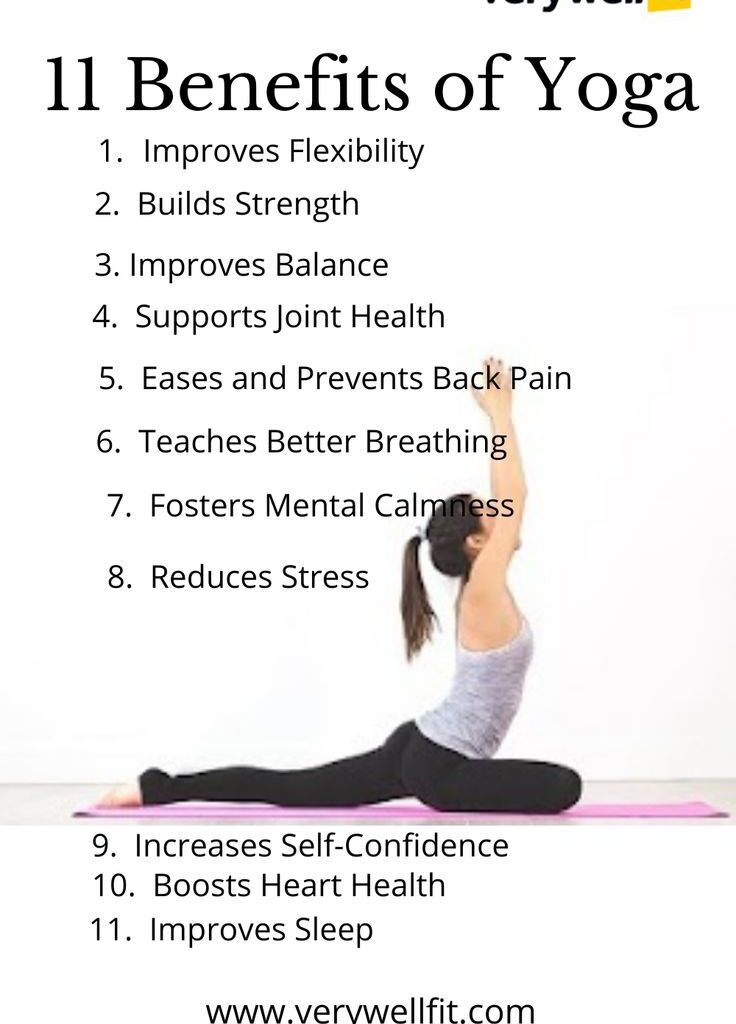
Why Practice Yoga?
Yoga is pursued for several reasons:
-
Physical health: It improves strength, flexibility, and balance.
-
Mental well-being: Yoga reduces stress, anxiety, and promotes a sense of calm and inner awareness.
-
Holistic approach: The practice encourages mindfulness and self-discipline, supporting a more balanced and purposeful life.
-
Therapeutic benefits: It may relieve symptoms of a range of conditions, including back pain, arthritis, and headaches.
Key Benefits of Yoga Poses (Asanas):
-
Improved Flexibility and Balance: Regular practice increases the range of motion in joints and reduces stiffness, even in older adults.
-
Increased Strength: Many poses engage core and peripheral muscle groups, enhancing overall strength.
-
Enhanced Posture: Poses promote body awareness—helping to recognize and correct poor posture.
-
Stress Relief: Mindful movement and breath control reduce the body’s stress response, leading to a calmer state of mind.
-
Better Circulation & Heart Health: Yoga can improve blood flow and cardiovascular health.
-
Pain Relief: Certain poses alleviate chronic pain, especially back pain and joint discomfort.
-
Mental Clarity and Focus: Balancing poses and breathwork improve concentration and mindfulness
Examples of Yoga Poses and Their Benefits:
| Pose (Sanskrit/English) | Main Benefits |
|---|---|
| Adho Mukha Svanasana (Downward Dog) | Stretches spine and hamstrings, strengthens arms, improves circulation, calms the mind. |
| Balasana (Child’s Pose) | Relaxes body and mind, stretches back, helps relieve stress. |
| Virabhadrasana II (Warrior II) | Strengthens legs and arms, opens chest and shoulders, promotes focus and patience. |
| Trikonasana (Triangle) | Improves spinal flexibility, relieves back/neck pain, enhances posture. |
| Savasana (Corpse Pose) | Deep relaxation, lowers blood pressure, allows absorption of practice benefits. |
| Navasana (Boat Pose) | Strengthens abdominals and core, improves balance. |
| Vrksasana (Tree Pose) | Enhances balance, strengthens legs, aligns spine |
How Yoga Works
Yoga poses work by stretching and strengthening muscles, engaging core stability, and training your attention through mindful movement and breathing. This dual physical-and-mental focus is key to the transformative effects of yoga, which include not just bodily health, but also enhanced self-awareness and emotional resilience.
Yoga is both a physical practice and a mind-body discipline, offering documented benefits for strength, flexibility, posture, stress management, and emotional health. Its poses (asanas) target specific physical aims but always within the broader framework of union—connecting body, breath, and mind for overall well-being
Yoga Accessories
Yoga mats and blocks are key for a home yoga setup. Mats keep you stable during poses. Blocks help with balance and reaching the floor in difficult positions. Straps aid in stretching farther, improving flexibility.
Choose items that match your level of practice.
Clothing should be comfortable and allow easy movement. Tight gear can limit motion in complex poses, while loose clothing might get in the way. Pick breathable fabrics to keep cool during intense sessions like vinyasa or ashtanga yoga.
Always have a towel handy to wipe sweat and provide extra grip when needed on your mat.
Benefits of Combining Yoga, Weight Lifting, and Cardio
Mixing yoga, weight lifting, and cardio does wonders for your body. Yoga increases flexibility and calms the mind, while lifting weights builds muscle and strength. Cardio keeps your heart healthy and helps with losing extra pounds.
This trio makes sure you work on different parts of fitness at once—like hitting many birds with one stone.
Imagine doing a sun salutation to warm up, then moving to squats for power, followed by a quick run. Your body gets to stretch, build, and breathe hard—all in one workout session.
It’s like giving your physique a full makeover from different angles without missing out on any aspect of getting fit.
This approach also means no more boredom from doing the same thing every day because you’re always switching things up. Plus, varying your activities reduces the risk of hurting yourself since you’re not overworking any single part of the body too much.
So yes—mix it up! Incorporate some downward dogs into your routine before grabbing those dumbbells or jumping
Enhanced Overall Fitness
Combining yoga, weight lifting, and cardio leads to better fitness. Yoga improves flexibility and helps with balance. Weight lifting boosts muscle strength. Cardio exercises like running or cycling increase heart health.
Together, they make a complete workout that touches every part of fitness.
Fitness is not about being better than someone else… it’s about being better than you used to be.
Using treadmills for running and stability balls for core workouts makes exercise fun and effective. Adding vinyasa yoga stretches muscles in new ways. This mix keeps the body guessing and growing stronger.
Setting goals helps track progress in strength, flexibility, and endurance. Simple tools like dumbbells for resistance training add variety without needing much space at home. A balanced routine includes aerobic exercises for heart health, stretching for flexibility, and strength training for muscle build-up.
Improved Flexibility and Strength
After boosting overall fitness, the next step is to work on becoming more flexible and stronger. Yoga helps a lot with this. It makes muscles stretch in new ways. This can prevent injuries and make your body feel good.
Weight lifting builds muscle strength too. It’s like giving your body armor against everyday aches and pains.
Using yoga mats and free weights are great tools for this goal. They help with exercises that wake up different muscles in your body. For example, yoga asanas focus on passive stretching to improve flexibility around your joints—like hips, shoulders, and back.
On the other hand, strength-training uses movements that challenge muscles, making them grow stronger over time.
Flexibility stops you from getting hurt during workouts or daily life tasks. Strength helps you carry heavy things easily or climb stairs without losing breath. Together, they ensure your body works well as a whole system—keeping you fit and able to move freely whatever comes your way.
Balanced Workout Regimen
Gaining better flexibility and strength sets the stage for a balanced workout plan. This kind of program mixes cardio, muscle building, and stretching. The mix not just keeps things interesting but also covers all fitness aspects.
It’s key to stop muscles from getting too used to one exercise type. When you mix it up, every part of you gets a good workout.
A balanced routine stops overworking any single muscle group. This prevents shoulder pain and other injuries that can come from doing the same thing too much. Including diverse activities like yoga for flexibility, weights for muscle strength, and cardio exercises strengthens the heart and lungs.
It’s about finding harmony in your fitness journey—ensuring core stability, aerobic health, and body power are all on point.
How to Create a Versatile Workout Routine: Yoga, Weights & Cardio
Combining yoga, weight training, and cardio in a balanced routine allows you to build strength, improve flexibility, and enhance cardiovascular health. Here’s a step-by-step guide to planning an effective and sustainable workout schedule that incorporates all three modalities.
Weekly Structure Overview
Aim to work out 4–6 days per week, varying the intensity and focus each day. Here’s a sample breakdown for a week:
| Day | Focus | Example Activities |
|---|---|---|
| Monday | Cardio + Weights | HIIT, dumbbell full-body circuit |
| Tuesday | Yoga | Vinyasa or Hatha session |
| Wednesday | Weights | Upper or lower body split |
| Thursday | Cardio | Steady-state cycling, running |
| Friday | Weights + Short Yoga | Full-body routine + restorative |
| Saturday | Cardio + Yoga | Cardio (dance, HIIT) + Power yoga |
| Sunday | Rest or Gentle Yoga | Yin yoga, stretching |
Combining Modalities in Single Sessions
Some days, you can blend two or all three elements for a dynamic, efficient session:
Full-Body Circuit
-
-
5min dynamic yoga warmup (Sun Salutations)
-
20min strength circuit (dumbbells/kettlebells: squats, rows, presses)
-
12–15min cardio intervals (jump rope, mountain climbers, jogging in place)
-
5–10min cool-down yoga (deep stretches, down dog, child’s pose)
-
Cardio & Flow
-
20min brisk walking, cycling, or dance workout
-
20min fluid yoga flow focusing on hips, back, and hamstrings
Tips for a Balanced Multi-Disciplinary Routine
-
Alternate hard and easy days to prevent burnout.
-
Focus on compound movements (squats, push-ups, rows) that engage multiple muscles.
-
Integrate yoga or stretching daily, even if just for 10min.
-
Take at least one day per week as rest or active recovery (gentle yoga or walking).
Sample Workout Plan
Here’s a template you can customize based on your time and equipment:
| Component | Frequency | Time per Session | Examples |
|---|---|---|---|
| Yoga | 3–5x/week | 20–40min | Flows, balance, restorative |
| Weights | 2–4x/week | 20–40min | Full-body, split, bodyweight circuits |
| Cardio | 3–5x/week | 20–30min | HIIT, running, dance, jump rope |
Sample Weekly Schedule (30–45min workouts)
-
Monday Full-body weights + short yoga
-
Tuesday Cardio intervals + core yoga flow
-
Wednesday Upper body weights + balance yoga
-
Thursday Low-impact cardio + long stretch session
-
Friday Lower body weights + yoga for hips
-
Saturday Cardio (dance HIIT) + short power yoga
-
Sunday Gentle restorative yoga or full rest
Best Practices
-
Warm Up with light movement or yoga flows before every workout.
-
Cool Down with static stretches or gentle yoga.
-
Track your progress and listen to your body.
-
Adjust the mix based on your goals (e.g., more yoga for flexibility, more weights for strength).
Tailoring It to Your Needs
-
Pressed for time? Do short “combo” sessions, with 10min each of yoga, strength, and cardio.
-
Prefer longer sessions? Dedicate alternating days to each style.
-
Modify the intensity using bodyweight or free weights, and select yoga routines (restorative or power) to suit your energy levels.
A versatile, home-based program like this not only keeps workouts engaging and well-rounded, but also supports physical and mental well-being.
Setting Up Your Home Fitness Space
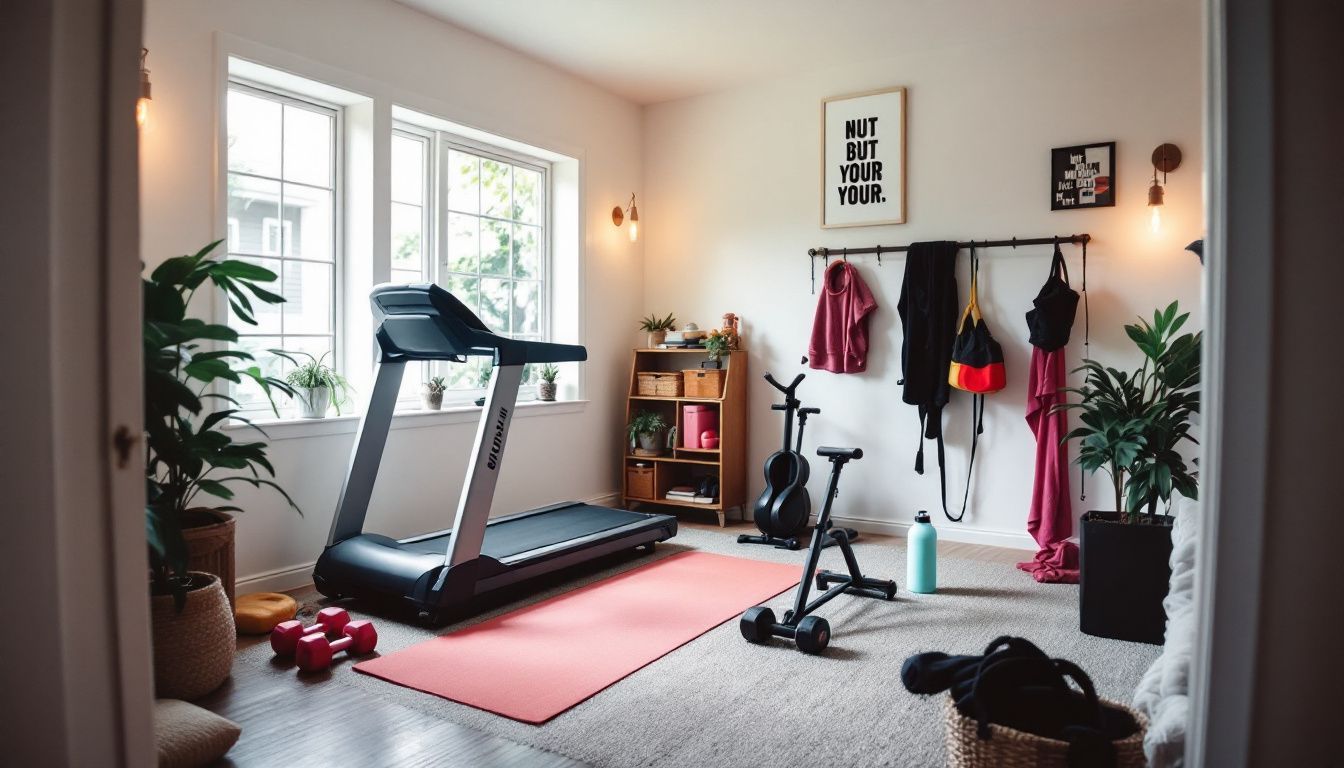
Creating a home fitness area is easy once you know what you need. Pick the right tools, like treadmills for running and dumbbells for lifting. Also, make sure there’s enough room to move safely.
This way, you can work out whenever you want without hassle. Keep reading to learn how!
Choosing the Right Home Fitness Equipment
Picking the right equipment is key for a good home fitness setup. Think about what you need for cardio, weight lifting, and yoga.
- For cardio equipment, a treadmill or indoor cycling bike works well. These help with heart health and endurance.
- A rowing machine is another good choice. It boosts cardiorespiratory endurance and uses many muscles.
- Weights are important for muscle strength. A set of dumbbells or a kettlebell can fit in small spaces.
- Consider a barbell and plates if you have more room. They’re great for full-body workouts.
- Resistance bands are versatile and cheap. They’re good for warmups and muscle activation.
- A yoga mat is a must-have for yoga or pilates exercises. It gives cushion and grip.
- Yoga blocks help with balance and reaching positions in yoga.
- An exercise ball can improve core strength and balance training.
- Don’t forget a jump rope for quick cardio anywhere.
Choose items that match your goals, like losing weight or getting stronger, and think about how much space you have at home. Safety should come first, so make sure there’s enough room to use the equipment without risk of injury.
Space Considerations
You need the right space for your home gym. It must fit a treadmill or an indoor cycling bike if cardio is your focus. For yoga, clear floor area for poses and stretches is key. Weight lifting requires room too, especially for a barbell set or weightlifting system.
Think about where in your house you can move freely. A spare room, garage, or even a living room corner works well. Make sure the floor can hold your equipment’s weight—a critical safety tip.
Every workout space needs good airflow and light.
Next up: picking out the best gear to start your exercise routine.
Safety Tips
Check your workout area to make sure it’s safe. Clear any clutter. You don’t want to trip on anything while moving around. Make sure your equipment is in good shape too. Broken or worn-out gear can cause injuries.
Learn the right way to do each exercise. Doing moves wrong can hurt you over time. Start with light weights and easy stretches, then slowly get harder as you get stronger.
Now, let’s talk about setting up a routine that keeps you going strong.
Developing a Home Fitness Routine
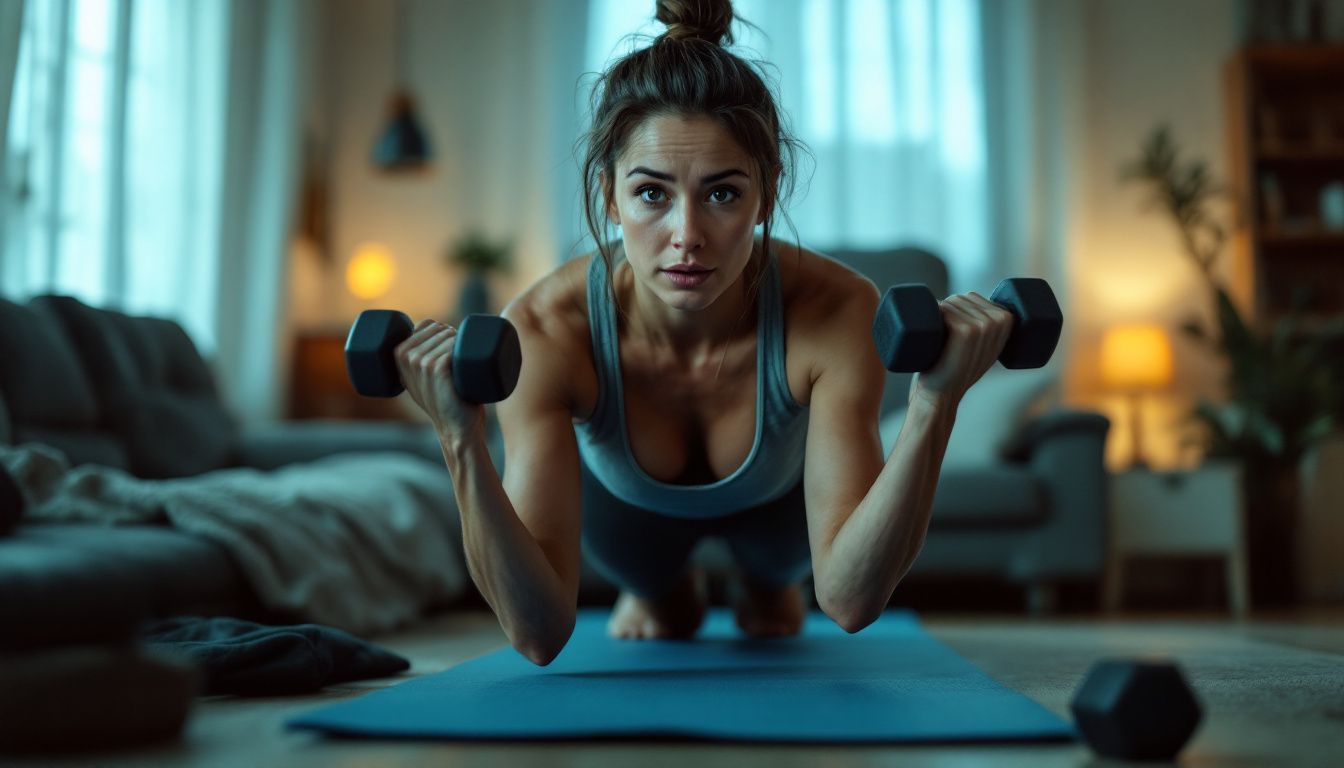
Creating a home fitness plan is key to staying on track. You’ll want to mix exercises like running, lifting weights, and doing yoga poses to keep things fresh. This way, your body gets all kinds of workouts.
Incorporating Variety
Mixing up workouts keeps things interesting. Try cardio exercises, like running or cycling, on some days. On others, lift weights to build muscle. Don’t forget yoga for flexibility and balance.
This mix helps prevent getting bored and works different muscles.
For cardio, use treadmills or indoor bikes. These tools make it easy to track progress. Choose dumbbells for weight training; they are versatile for many exercises. Yoga mats and blocks support poses and stretches well.
Changing routines often is good too. It stops muscles from getting used to the same moves. This way, your body keeps improving in strength, endurance, and flexibility over time.
Scheduling Your Workouts
Planning your workouts is like setting up a weekly menu. You pick days for cardio, weight lifting, and yoga to make sure you hit all areas: heart health, muscle gain, and flexibility.
Think of each workout as a meal that feeds a different part of your fitness goals. Just as eating the same thing every day gets boring, doing the same exercise can lead to overtraining and boredom.
For best results, spread out your activities. Maybe do cardio on Monday, Wednesday, and Friday. Then fit in weight lifting on Tuesday and Thursday. Yoga could be a daily morning stretch or a longer session on weekends when you have more time to relax into it.
This keeps things fresh and works out different muscles while giving others time to rest.
Use tools like calendars or apps to keep track. These help remind you what’s next so you stay on path toward meeting your health targets. Also consider how energy levels change through the week – save intense sessions for high-energy days!
Setting Realistic Goals
After planning your workouts, it’s time to focus on goals. Goals keep you on track. They help you see progress in your health and fitness journey. For home fitness, setting goals means knowing what you want from yoga, weight lifting, or cardio.
Set goals that match your lifestyle and health needs. Maybe you aim to lose weight or get stronger muscles like biceps. Or perhaps improving heart health is your target with cardio exercises.
Be clear about these aims but keep them achievable. If losing weight is a goal, start small—aim for a pound or two each month rather than ten pounds right away.
Goals should also change as you move forward. Once you hit one target, set a new one that builds upon your success. This way, exercise stays fresh and challenging.
Conclusion
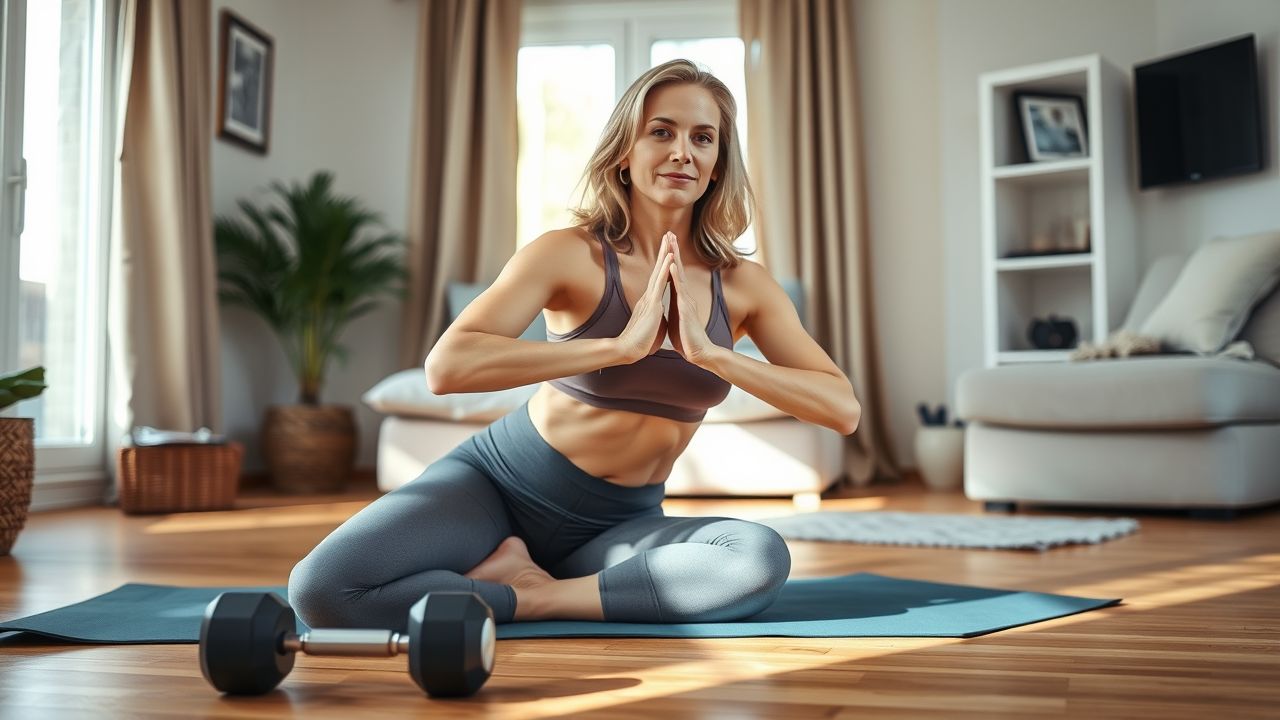
Your home can turn into a great place for fitness. You just need a few things: something for heart health, weights for strength, and space for yoga. This mix makes sure your whole body gets stronger and more flexible.
It’s easy to start—pick the right gear and set goals that you can reach. Every step you take brings better health and confidence. Go ahead, make your living room your gym!
FAQs
1. What are the key components of home fitness involving yoga, weight lifting, and cardio fitness?
Home fitness requires a balance of physical postures, diet, and breath control in yoga; muscular imbalances correction and bone loss prevention in weight lifting; as well as maintaining a healthy heart through cardio exercises to prevent cardiovascular disease.
2. How can I manage my diet for effective home fitness?
A health food-focused diet plays an important role in managing weight gain or promoting weight loss depending on your goals. It also provides the necessary nutrients to support your exercise regimen and overall health.
3. Can I do all these exercises without a trainer or going to a fitness center?
Yes! With proper knowledge about passive flexibility for yoga, eccentric contractions for weight lifting, and understanding your bounce rate for cardio workouts – you can safely engage in these activities at home. However, consider consulting with professionals like trainers or kinesiologists if you have chronic conditions.
4. Are there any additional benefits from engaging in these forms of exercise at home?
Absolutely! Beyond the obvious health benefits such as improved cardiology function and reduced risk of fractures – mental wellness is also enhanced through practices like meditation during yoga sessions.
5. What equipment might be helpful for my home workouts?
While not strictly required – using equipment like hula-hoops for fun cardio activities or weights (like dumbbells) can help enhance your workout effectiveness by providing resistance training opportunities.


 Cart is empty
Cart is empty 






